Carl Zeiss Jena "Turactmo" 8x24
| Das 8x24 Monokular stammt aus der "Turact"-Modellserie (ca. 1914-1933). Die vorliegenden Exemplare haben die Seriennummer 1089810 (1920) und 1410529 (1928), ein weiteres Modell hat eine ausgekratzte Seriennummer (124...7). Es hat eine Hartgummiummantelung, ein linksseitiges Okularstück mit einer Bakelitaugenmuschel, einem diagonal gerillten Fokussierungsteil, einer umlaufenden Dioptrienskala von +/-5 sowie einer Okularlinse mit 11mm Durchmesser. Letztere ist somit kleiner als beim "Telact" Vorgängermodell 8x24. Auch die Baulänge ist kürzer. Die schwarz lackierten Messingdeckel sind einfach verschraubt, der Rand der Objektivfassung ist abgerundet. |
This 8x24 monocular comes from the "Turact" model series (1914-1933). The serial numbers are 1089810 (1920) and 1410529 (1928); another model has a scratched serial number (124...7). The body has a vulcanite covering, a left-hand sided eyepiece with a Bakelite eyecup, a diagonally milled focusing part, and with a full dioptre scale marked at zero +5 and -5. The ocular lens is 11mm in diameter, thus being smaller than the one of the predecessor "Telact" model 8x24. The overall length too is shorter. The black lacquered brass covers have one screw. The objective frame rim is rounded. |
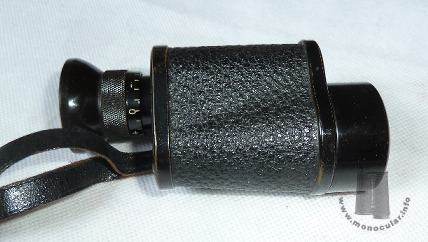
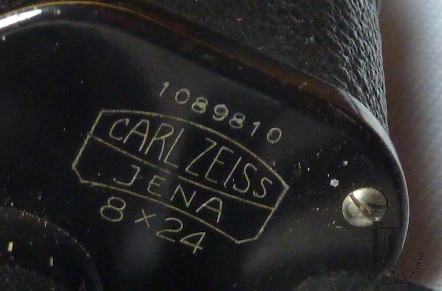

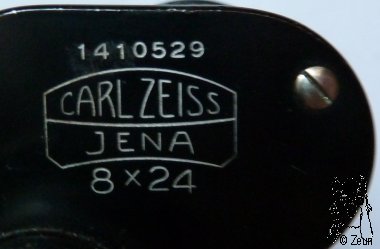
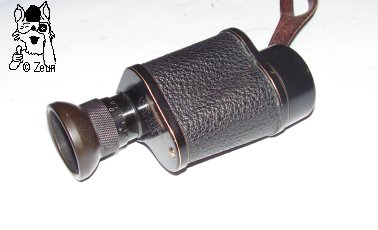
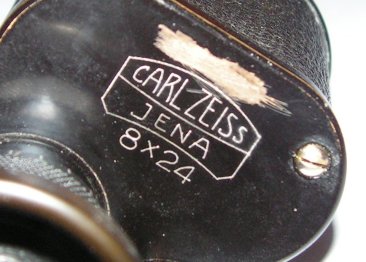
| Das 8x24 ist 93-98mm lang, das Gehäuse misst oben 44x43mm und unten 49x49mm; der Objektivtubus ist 35mm, das Okularstück 20mm, der Fokussierungsteil 24mm und die Augenmuschel 33mm im Durchmesser. Das Glas wiegt 155g ohne bzw. 189g mit dem Trageriemen. | The 8x24 is 93-98mm tall, the housing measures 44x43mm at its top and 49x49mm at its bottom. The objective frame is 35mm, the eyepiece 20mm, the focusing ring 24mm, and the eyecup 33mm in diameter. Its weight is 155g without, 189g with its strap. |
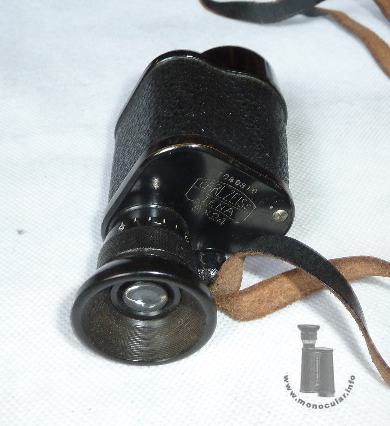
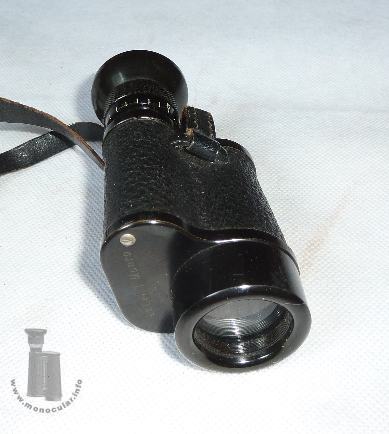
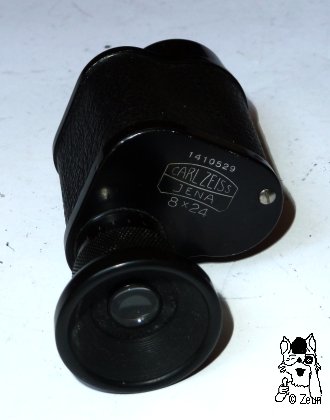
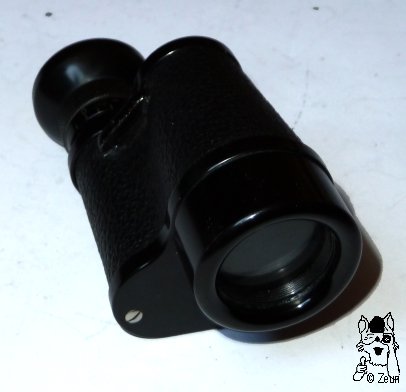
| Das 1920er Exemplar hat einen Lederköcher mit im Deckel eingelassenem Kompass, der wiederum mit einem Klappdeckel geschützt werden kann. Bei erfolgter Peilung kann mit einem kleinen Stift die Kompass-Windrose zum Ablesen festgestellt werden. Der Köcher trägt an der Seite des Zugverschlusses das Zeiss-Logo. Der Deckl ist mit den goldenen Initialen "T. M." versehen, die sich auch als "Lt. Col. T. Munro" auf dem unteren Gehäusedeckel des Monokulars wiederfindne. Eine Identifizierung des Offiziers ist mir noch nicht gelungen (Hinweise sind willkommen). | The specimen from 1920 comes with a leather case with a compass set in the case's lid. The compass has aprotection cover. When taking the bearing, you can lock the compass card by pushing a little pin. There is the Zeiss lens logo on the front side where the spring latch is. The case'S cover is marked with the golden initials "T. M." which are also included in the bottom cover engravings of the monocular, i.e. "Lt. Col. T. Munro". I was not yet able to identify this officer (hints are welcome). |
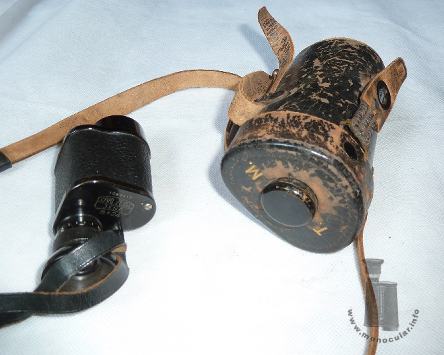
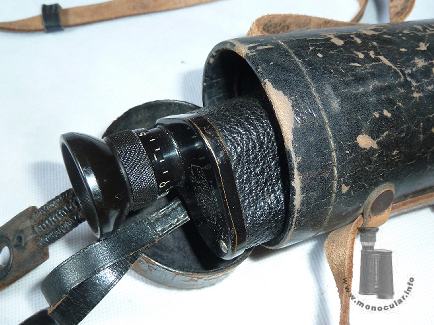

Fotos: Zeun

